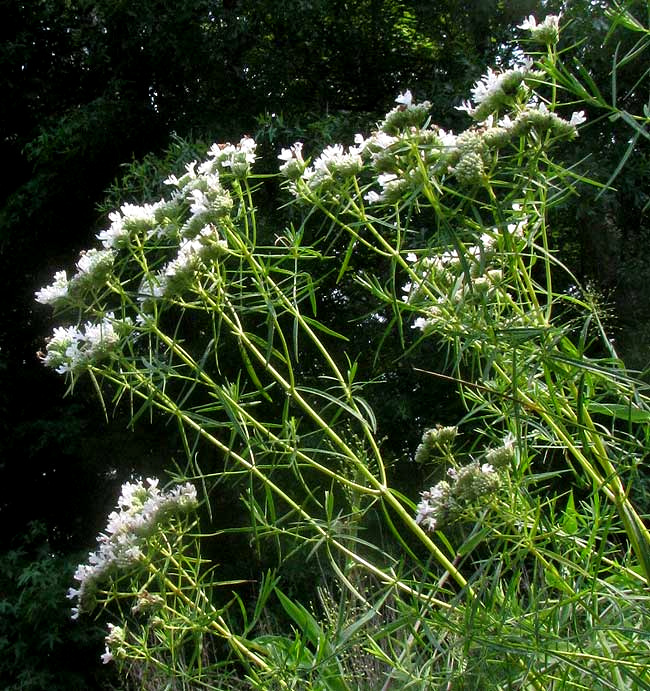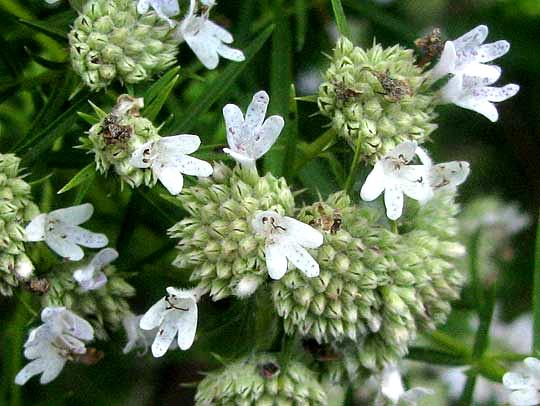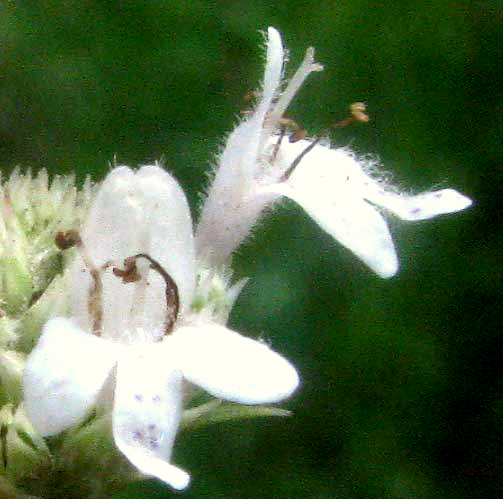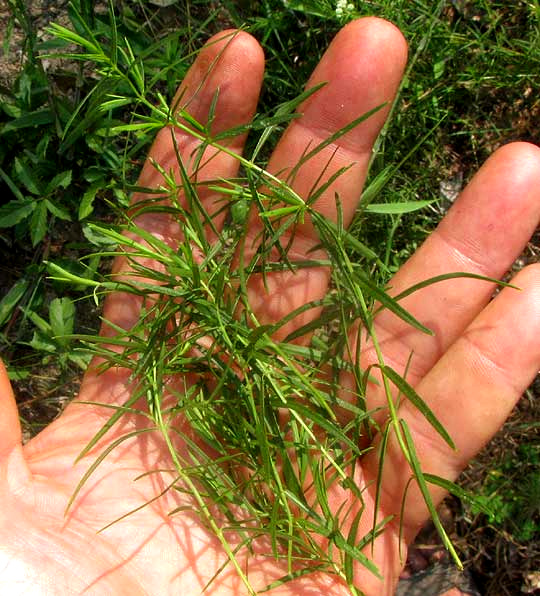Excerpts from Jim Conrad's
Naturalist Newsletter

from the the July 1, 2012 Newsletter issued from the woods of the Loess Hill Region a few miles east of Natchez, Mississippi, USA
MOUNTAIN-MINT TEA
Along an isolated gravel road in nearby Homochitto National Forest grew a dense, knee-high, car-tire-size clump of white-flowered, slender-leafed wildflowers, a few branches of which are shown above. A close-up of the purple-spotted flowers arising from dense heads is seen below:

An even closer look at the hairy, bilaterally symmetrical blossoms is seen below:

In that picture notice that each flower bears four brown and shriveling stamens, which obviously are well past their pollen-producing stage. However, in each flower, arising amidst the no-longer-useful stamens, is a white style tipped with a Y-shaped stigma, clearly at the peak of their receptivity for pollen.
That's a fine picture showing how this plant avoids having its flowers pollinate themselves -- by shedding their pollen well before their female parts mature. Flowers with male parts maturing before their female parts mature are said to be "protandrous." When female parts mature first the flowers are "protogynous." Protandry and protogyny occur in many flowering plants and it's always fun to check if a certain flower practices one or the other.
Anyway, this is Narrowleaf Mountain Mint, PYCNANTHEMUM TENUIFOLIUM, the narrow leaves separating the species from other mountain mints, of which there are about 20 species, all native to North America. Our Narrowleaf species may be the most commonly occurring, since ecologically it's flexible enough to make use of disturbed soils. It's distributed throughout the eastern and central US and much of eastern Canada. With such flowers, opposite leaves and stems that are square in cross-section, mountain mints are obviously true members of the Mint Family.
Crushed mountain-mint leaves smell minty enough to rouse thoughts of mint tea, so the day I came across this population I picked a little wad of leaves and stems, as shown below:

The next morning I poured about a cup and a half of boiling water onto them. In three or four minutes the water hadn't acquired much flavor, so I waited about ten minutes, and then I had a nice, fresh-tasting tea with a flavor that struck me as something between that of steeped pine needles and dill. It wasn't a sweet flavor, but a pleasant one, one that complemented well the hot cornbread the tea was served with.